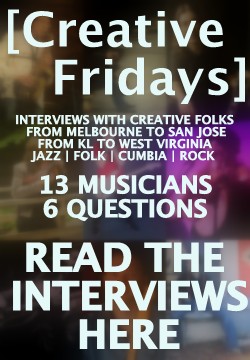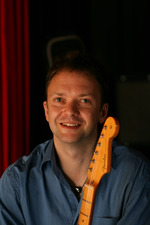#azjazzlessons #9: Kurt Rosenwinkel Soloing, Comping and Ensemble Ideas
 Sunday, February 9, 2014 at 11:29PM
Sunday, February 9, 2014 at 11:29PM
For jazz guitarists & jazz improvisors:
#azjazzlesson #9 #todayIlearned
So I'm trying to learn something new everyday by documenting what I learned from watching a YouTube video. Today I looked for something from Kurt Rosenwinkel.
Here's what I learned:
Kurt Rosenwinkel Group - Jacky's Place [2006]
Solo Development Ideas (from 2:06 onwards)
1) End long scalar or sequenced phrases with longer notes
2) Create drama by using double time or smaller subdivisions in the later part of a long phrase
3) Have clear breaks/spaces between phrases
4) Use triplets on long phrases to build tension
5) Continue sequences longer than expected into higher registers
6) Use end fragment of a long phrase as the motive for the next line
Tone
7) Keep a clear tone even in higher register
8) Use accents to highlight higher notes of phrases and longer note duration
Comping Ideas
9) In a piano & guitar dual comping situation, one should use a constant rhythmic patern and the other instrument play a countermelody or a complementary rhythmic phrase
10) Take turns during comping, cue for lead comping role when there is both piano and guitar
Ensemble Ideas
11) Use clear breaks for a tight arrangement
12) Unison tenor and electric guitar lines can be powerful
13) Guitar can play softer chord attacks in between melodic phrases
https://www.youtube.com/watch?v=WD_RDZQowoM
#jazzsolo #improvisation #jazzguitar #guitar#kurtrosenwinkel
--
If you're interested to learn more in depth, lessons are available worldwide via Skype & in person in Kuala Lumpur.
Register for the 2-month jazz guitar masterclass here:http://www.azsamad.com/jazz
_________
❤ If you liked this post, please Like it or Tweet it! =)


